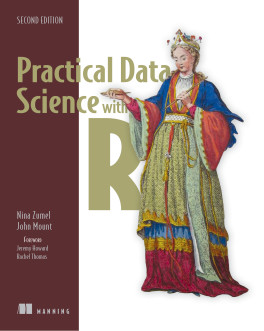pro $24.99 per month
- access to all Manning books, MEAPs, liveVideos, liveProjects, and audiobooks!
- choose one free eBook per month to keep
- exclusive 50% discount on all purchases
- renews monthly, pause or cancel renewal anytime
lite $19.99 per month
- access to all Manning books, including MEAPs!
team
5, 10 or 20 seats+ for your team - learn more

Python has become a required skill for data science, and it’s easy to see why. It’s powerful, easy to learn, and includes the libraries like Pandas, Numpy, and Scikit that help you slice, scrub, munge, and wrangle your data. Even with a great language and fantastic tools though, there’s plenty to learn!
Exploring Data with Python is a collection of chapters from three Manning books, hand-picked by Naomi Ceder, the chair of the Python Software Foundation. This free eBook starts building your foundation in data science processes with practical Python tips and techniques for working and aspiring data scientists. In it, you’ll get a clear introduction to the data science process. Then, you’ll practice using Python for processing, cleaning, and exploring interesting datasets. Finally, you’ll get a practical demonstration of modelling and prediction with classification and regression. When you finish, you’ll have a good overview of Python in data science and a well-lit path to continue your learning.
what's inside
- "The data science process" from Introducing Data Science by Davy Cielen, Arno D. B. Meysman, and Mohamed Ali
- "Processing data files" from The Quick Python Book, Third Edition by Naomi Ceder
- "Exploring data" from The Quick Python Book, Third Edition by Naomi Ceder
- "Modeling and prediction" from Real-World Machine Learning by Henrik Brink, Joseph W. Richards, and Mark Fetherolf
about the author
Naomi Ceder has been learning, using, and teaching Python since 2001. She is chair of the Python Software Foundation, the originator of the PyCon and PyCon UK poster sessions, and founder of the Python Education Summit. Naomi is the author of The Quick Python Book, Third Edition (Manning Publications, 2018).team
- five seats for your team
- access to all Manning books, MEAPs, liveVideos, liveProjects, and audiobooks!
- choose another free product every time you renew
- choose twelve free products per year
- exclusive 50% discount on all purchases
- renews monthly, pause or cancel renewal anytime
- renews annually, pause or cancel renewal anytime
-
![]() Exploring Data with Python ebook for free
Exploring Data with Python ebook for free


















 Exploring Data with Python ebook for free
Exploring Data with Python ebook for free